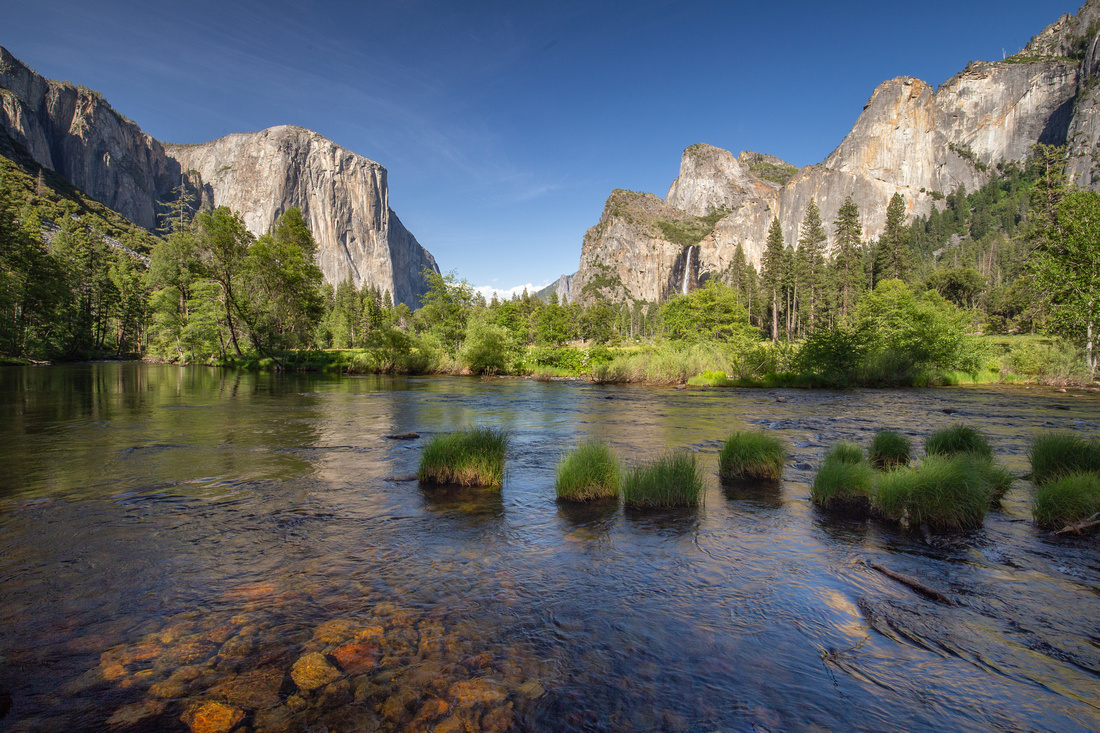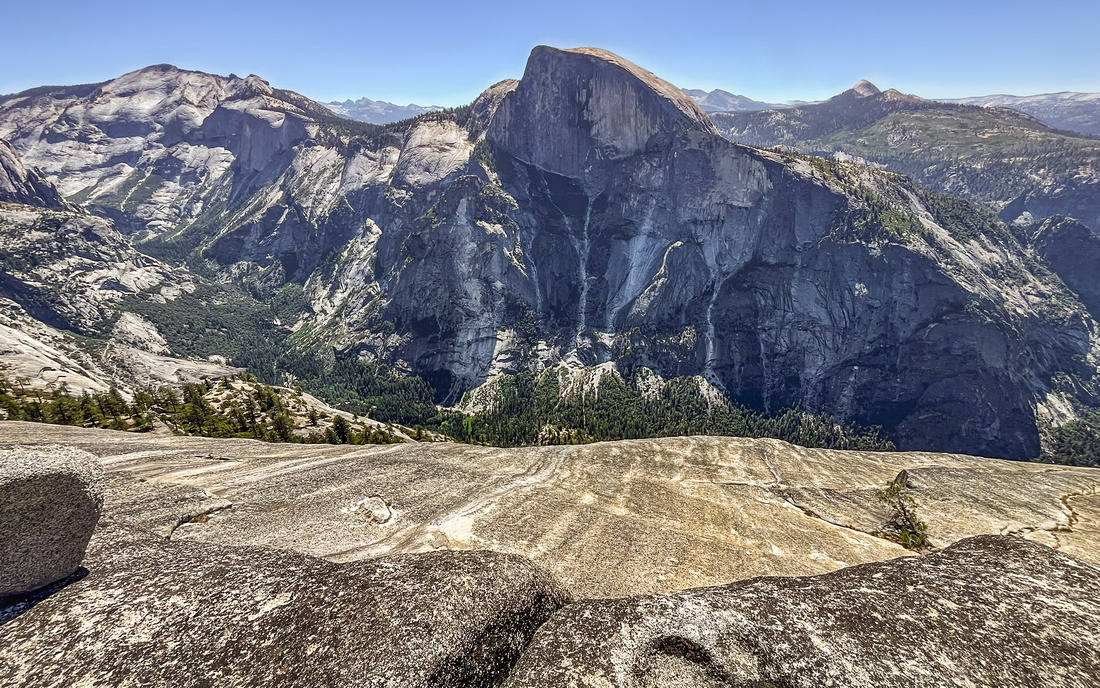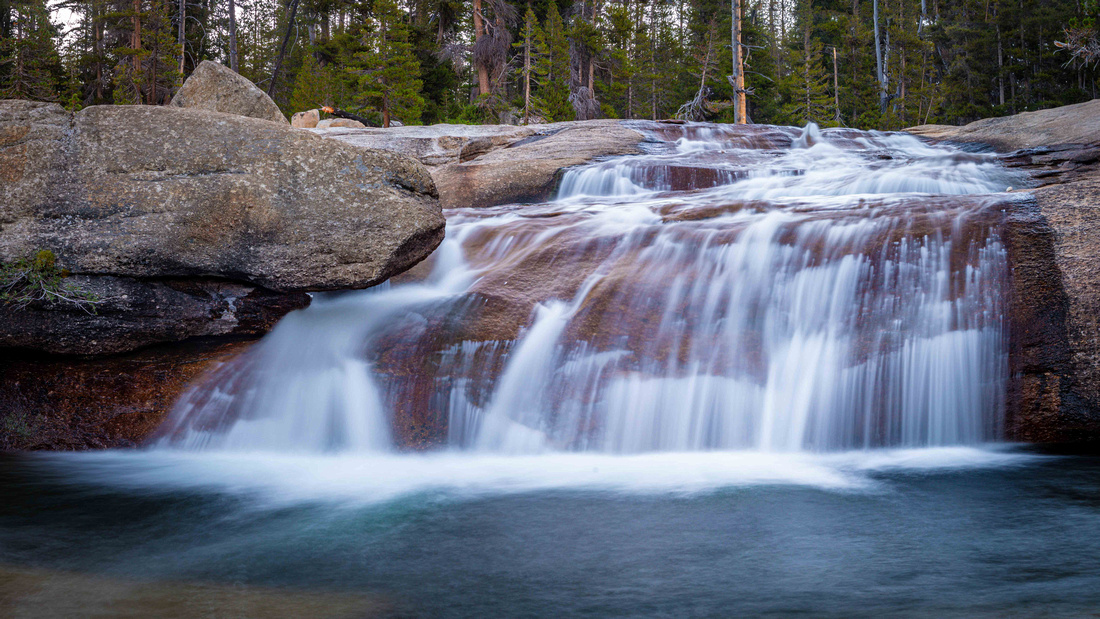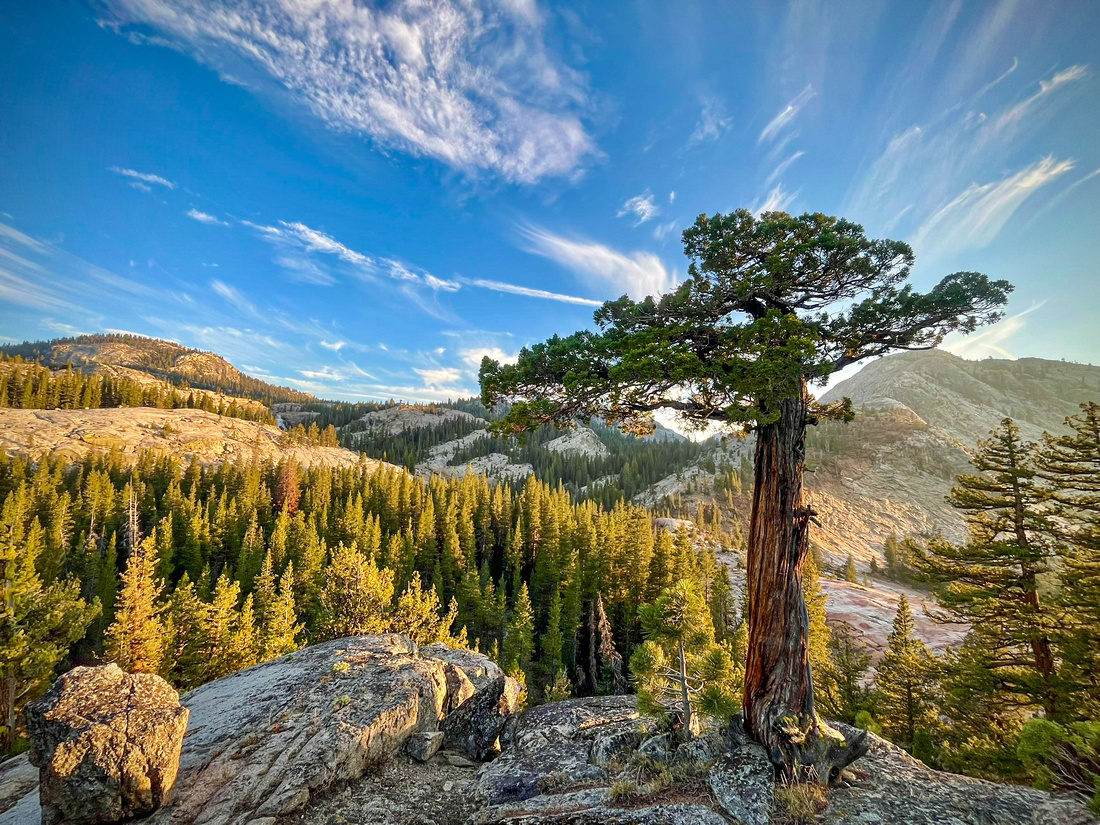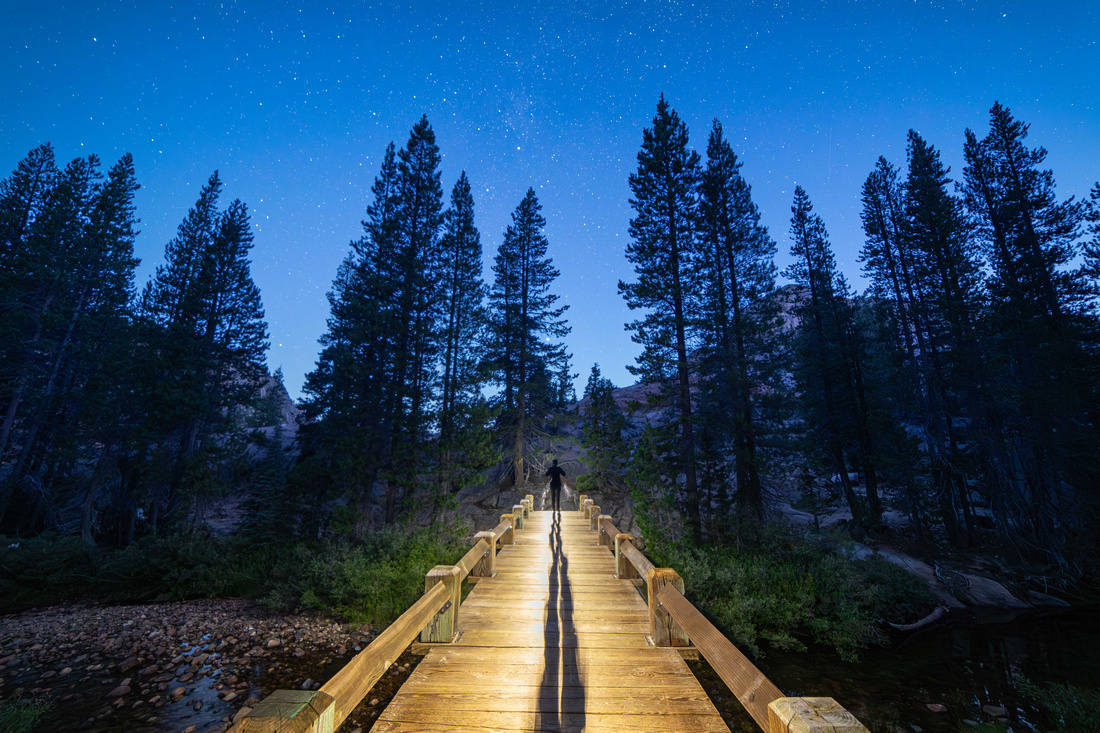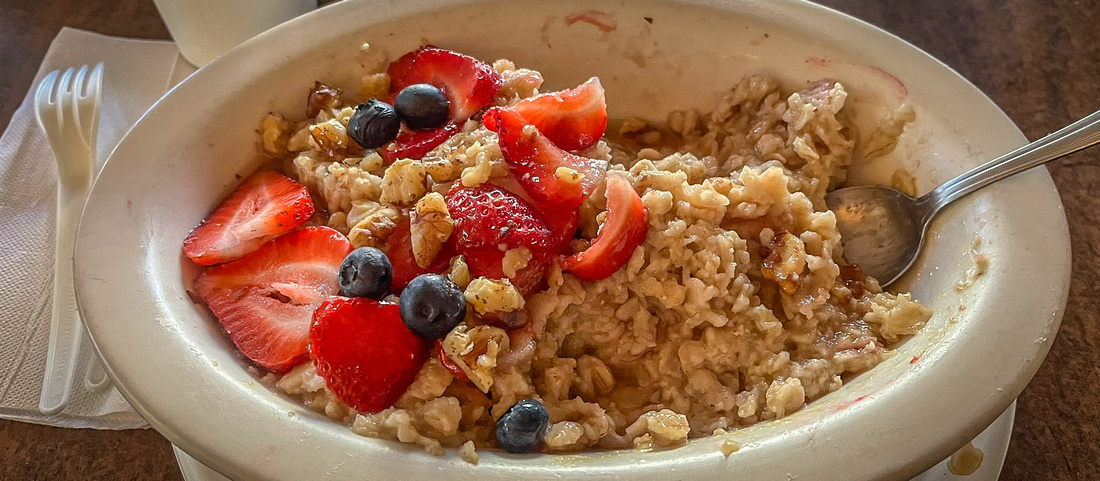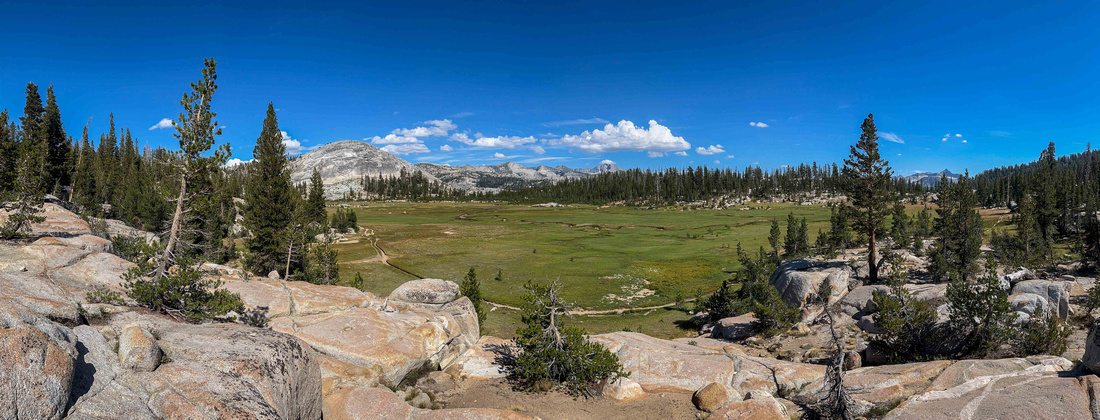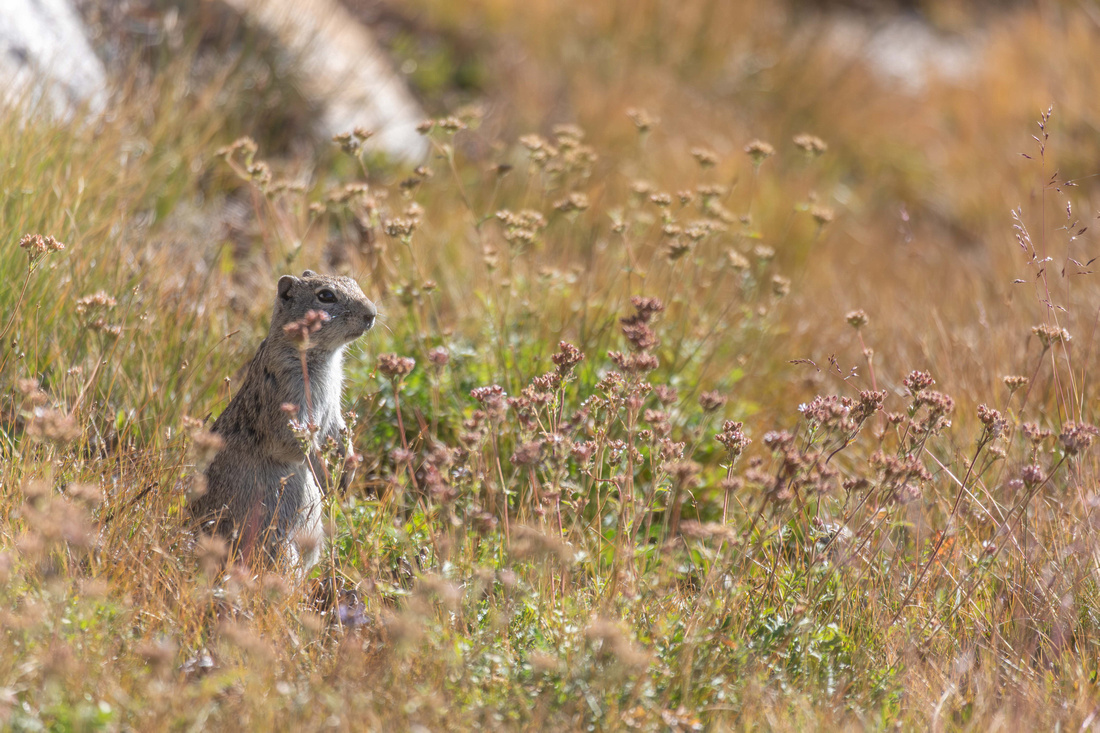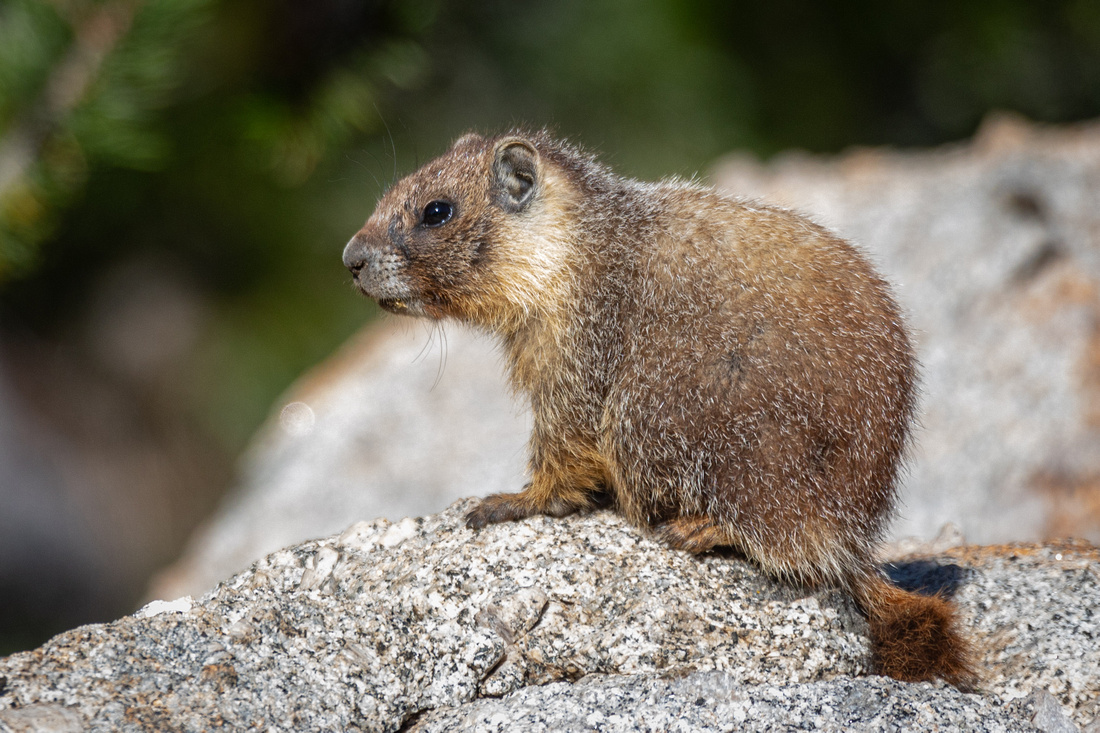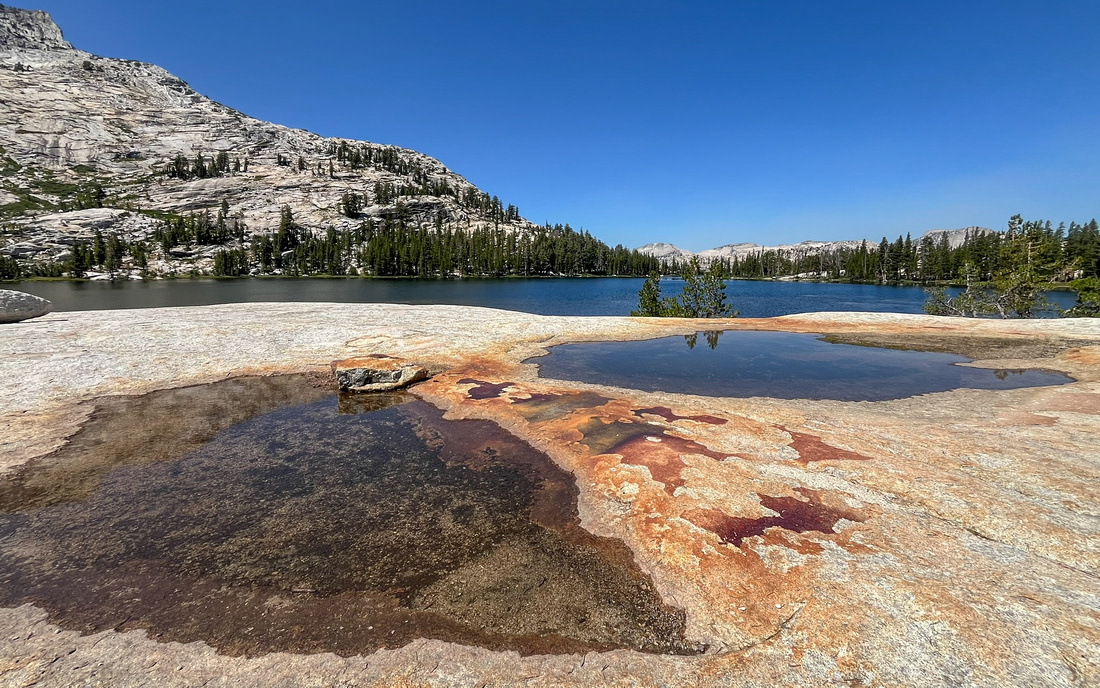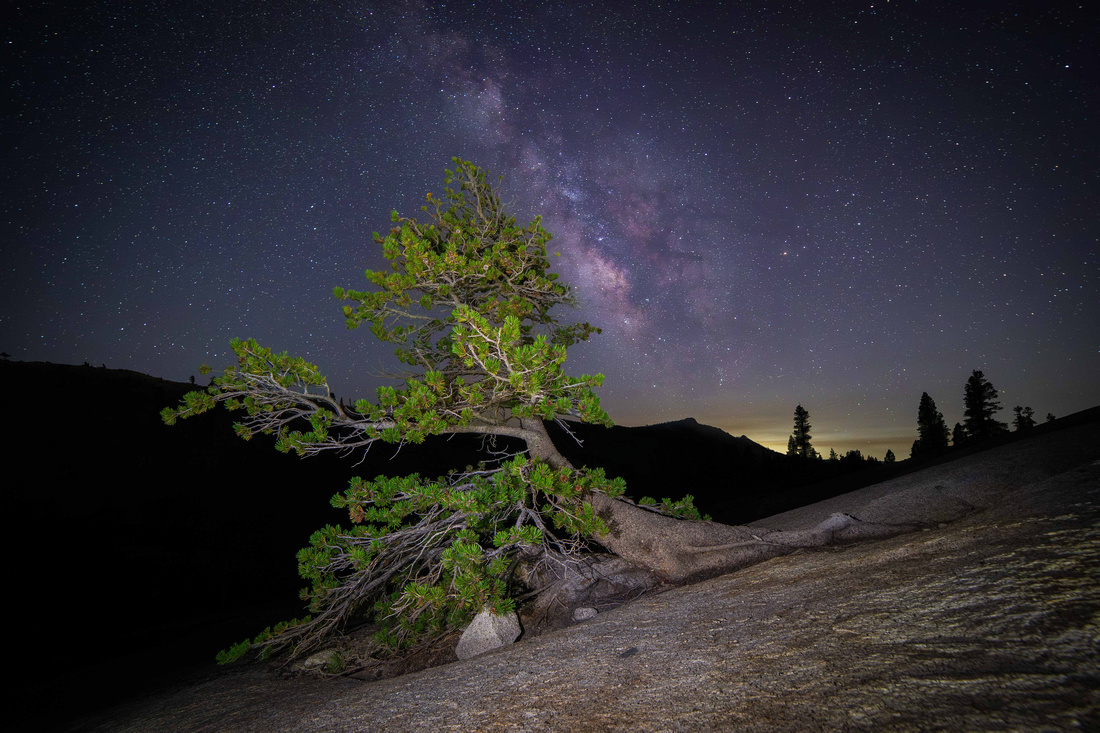Yosemite High Sierra Camps
My Experience at the Yosemite High Sierra Camps
Text and photos by Heather Cline
If you say the words, "Yosemite National Park, most people probably picture something like this and that makes sense given roughly 90% of visitors to this national park spend their time in the valley. But the valley represents only 1% of the size of this national park which covers nearly 750,000 acres, or nearly 1,200 square miles.
There are actually 7 distinct areas within Yosemite: The Valley, Glacier Point, Mariposa Grove, Wawona, Hetch Hetchy, Crane Flat, and Tuolumne Meadows.
Tuolumne Meadows is the launching point for Yosemite's historic High Sierra camps. These camps opened in 1916 and have become a popular Yosemite tradition over the last century. So popular that you have to enter a lottery for a chance to stay there.


In 2019, I entered the lottery for a chance to stay at each of the five Yosemite High Sierra Camps and I couldn't believe I won all 5 nights. Unfortunately, I was alerted several months later that the camps would not open in 2019 due to snowpack, so they rolled over my reservation to 2020. This process continued for another 5 years and during the course of this, two of the more remote camps, Merced Lake and Vogelsang were taken off the route due to wilderness impacts.
This post covers my experience hiking and staying at the three remaining camps: Glen Aulin, May Lake, and Sunrise in August 2024. I also recorded a video of my adventure. You can check that out here: Yosemite High Sierra Camps.
Before I launch into this, there is something I feel is important to share:
|
It would be irresponsible of me to post this article without first sharing an unfortunate and staggering statistic. Every year, and average of 20 bears are hit by cars in Yosemite National Park. The number one reason for this is speeding. The issue has become so common that the park service began placing these “Speeding Kills Bears” signs along the road in places where a bear has been struck by a vehicle. The average speed limit in Yosemite is 35 miles per hour. This is to protect park visitors and wildlife. There is no reason to be racing across this park to get somewhere more important – this IS the destination. So, when you visit, please slow down, enjoy the scenery and the beautiful wildlife that call this home. If you have a few minutes, I highly recommend this short blog by a Yosemite Park Ranger: Speeding Kills Bear - Yosemite National Park (U.S. National Park Service) - Bear Team Blog (nps.gov)
|
Day 1: Tuolumne Lodge
With the modified hiking loop to the High Sierra Camps, visitors are given the opportunity to begin at Tuolumne Lodge, which is set up like the other camps but on a larger scale. Staying here is a nice introduction into what to expect and to give anyone living at lower elevations a night to acclimate before hiking in the high country.
Since I was able to drive directly to this lodge, I had plenty of time to do a day hike before I checked in, so I decided to hike to North Dome. It’s a moderate 8.8-mile round trip hike with excellent views of Half Dome and the chance to take a spur trail to Indian Ridge Natural Arch, which results in a 10.4-mile round trip hike. This was a great start to the trip.
Tuolumne Lodge is situated along the Tuolumne River and includes some nice cascades and swimming holes. This was a popular spot for lodge guests to relax before dinner.
Dinner was held in a riverside dining tent and seating was family style. They do require reservations, but you can make them while you are checking in. Not all guests at Tuolumne lodge are going on to the High Sierra camps, but the people at my table were so it was a great introduction to those I’d be spending the next few nights with. Ordering at the lodge is different than the other camps because they have a menu as opposed to a fixed course. I ordered their vegan option of vegetable curry. It was pretty good!
After dinner, it was already time to get ready for bed. The tents are set up to house 4 guests so unless you are travelling with 3 companions, prepare to sleep with strangers! Each cot has at least 1 blanket. The tents also have wood burning stoves but during my entire stay, none of us used them since the temperatures were pretty comfortable.
This site had showers, flush toilets, towels, linens, and bear boxes. All food and scented items must be stored in the bear boxes overnight - here and at all the remaining High Sierra Camps.
Day 2: Glen Aulin
On the morning of my official start I drove to the Glen Aulin trailhead on Soda Springs Road. There are bear boxes at the trailhead for storing food and scented items. Don’t forget that cherry flavored ChapStick in the back of your glove box!
The elevation at Tuolumne Meadows is roughly 8,600 feet. The beginning of the trail is relatively flat then begins a slow descent to Glen Aulin sitting at 7,800 feet, so the first day is a rather luxurious 5.8 miles of gradual downhill hiking. Along the way, you will hike along the Tuolumne River, passing Tuolumne Falls as well as many other cascades. There was one creek crossing but there were ample rocks available to "rock hop" and keep your feet dry.

Each camp is supplied by a mule train twice per week. I was fortunate to see the mules every day during my trip, along with other delightful critters.

Glen Aulin Camp is set at the base of the waterfall by the same name. There are 8 tents here. A much more intimate setting than the nearly 70 tents at Tuolumne Lodge. This site has flush toilets and showers, but the showers weren’t running when I was there. However, the pool below the falls is great for swimming, washing your dirty hiking socks, and doing some “blister therapy” if needed. I needed it!!
The scenery is really beautiful, and there are options for short day hikes from here, such as waterwheel falls so I could have easily stayed an extra day at this camp. Maybe next time!

Dinner was served family style again. The small crew served tomato basil soup, salad, fresh baked bread, chicken, rice, and vegetables. I had marinated tofu over rice, and they even brought me vegan bread. The non-vegan dessert was chocolate cake with vanilla glaze, but I had fresh berries which were a really nice treat in the backcountry, and everyone seemed to enjoy a hot meal after a long day.
Sunset at Glen Aulin was my favorite of all the camps despite getting lost enroute to the best viewing spot. I ended up finding a nice tree to photograph, so it was worth the extra steps.
It was a great first day and I even had a chance to sneak in a little night photography while I was there.
Day 3: May Lake
The next day’s camp was May Lake which is set at 9,270 feet in elevation, and roughly 8.5 miles from Glen Aulin. The lake reflects Mount Hoffman which can be reached by an additional 6-mile Round Trip Hike once you reach the Lake.
There are signs posted along the shore that state "no swimming" but there were plenty of people in the water and even a park ranger I was chatting with on the trail recommended it for swimming, so I guess it's okay.
Dinner included veggie-lentil soup, salad, toast, and pasta with marinara and meatballs for the carnivores. Dessert was a chocolate cake with berries, but they made baked cinnamon apples for the dairy free folks, and they were delightful!
My favorite part of this entire experience was at the end of each dinner service, the crew came out, introduced themselves and told us how long they had worked at the camps and a fun fact about themselves. The May Lake crew was my favorite. They were so warm and friendly and all of them were brand new to the camps this year.
These camps typically open in June but due to logistical issues, they didn’t open until August 2nd – after 5 years of being closed. Our group was their first full group and their 4th day of being opened. I'm amazed at how well they were able to accommodate 35 guests and do so with a smile on their faces.

Several of us hiked up to a ridge to watch the alpenglow after sunset. It was surprisingly comfortable up there on an August evening and the best part was - no mosquitos - not even one!!!
Day 4: Sunrise
Before departing for our next camp, I was greeted by the camp chef who let me know they were making me "fancy oatmeal" and it was fancy indeed - covered in strawberries, blueberries, nuts, and honey. It was fantastic and so filling that I didn't get hungry for another 7 hours including a full day on the trail.
The hike from May Lake to Sunrise involved descending 1,990 feet – walking flat for what felt like 5 minutes - then ascending another 1,980 feet over 8.25 miles. You do pass three lakes along the way, which make for a nice spot to break for lunch and have a swim if you choose.
I unfortunately, was not feeling my best this day. I had 2 blisters, a shin splint, and intense abdominal pain that plagued me the entire way. None of it was serious but it did remind me I am a mere human.
When you hike into Sunrise, you overlook over a valley and drop down into it before you reach the camp. There are a couple of those classic metal Yosemite trail signs at the bottom of the trail and an opportunity to turn left or right - but no mention of Sunrise High Sierra Camp and there are no visual indicators that a camp is nearby. For several minutes, I thought I had missed a trail junction and was going to have to backtrack.
I thought to myself, "If I have to hike back up that hill, I am going to cry". Fortunately, I decided to take a left at the signs and shortly after that, I saw one of the tent roofs up in the rocks and trees and breathed a sigh of relief.
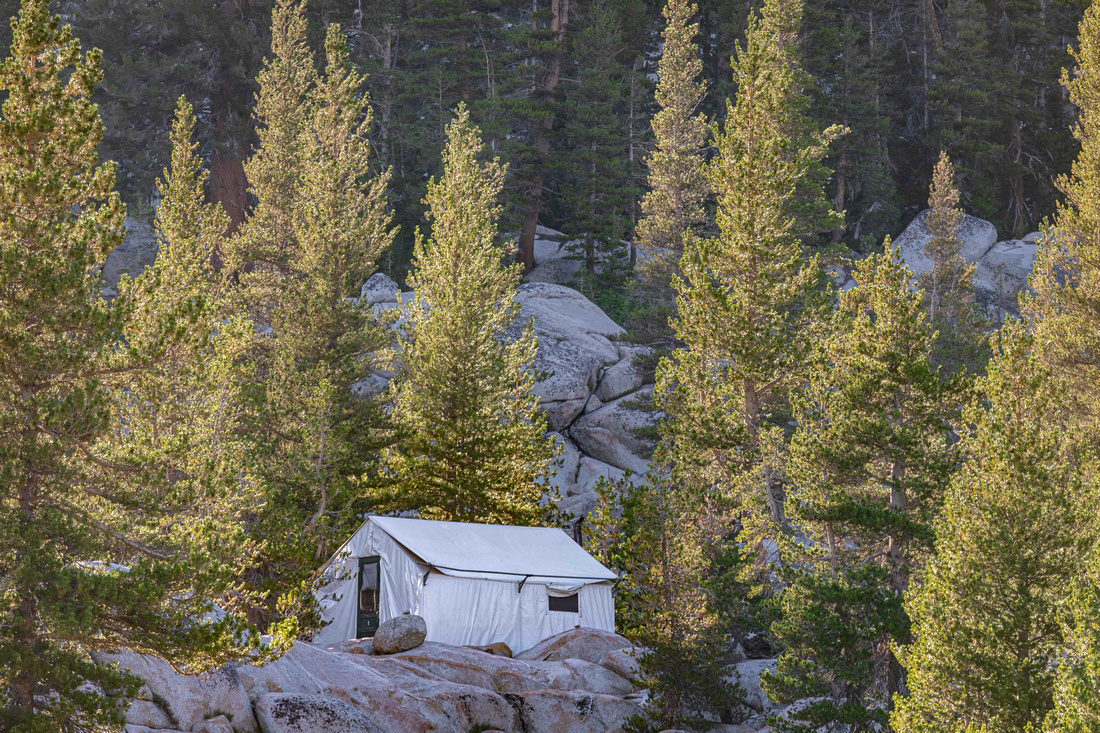

I didn’t expect to be too impressed with Sunrise from a scenic standpoint, but it ended up being my favorite place for photos – and that's because I found critters there, and if you have ever read my blog, you know wildlife is my favorite.
Sunrise is set at 9,270 feet. There is no water feature here, but they do have the most modern showers with very hot water and that was so nice after the hike in.
There was a slight mix up with dinner, so we ate the same meal as the previous night, but it was still great. After dinner, most of the guests found spots among the rocks to watch the sunset. The area is called sunrise but sunset was beautiful too.
It was really nice getting to know my fellow hikers/campers and to hear everyone’s stories. Some people were travelling to the camps for the first time - like me - and others had done it several times over the years. People who started out as strangers were hugging goodbye and exchanging emails by the time we left.
Day 5: Tuolumne Meadows
The final day, I started my hike back to Tuolumne Meadows. This required a gentle climb towards the junction of Lower Cathedral Lake then the trail dropped in elevation from there.

Along the way, I saw more critters and finally saw a marmot. He was super generous with his modeling, so I thanked him and gave him a wide berth so as not to disturb his morning foraging.
I decided to take half mile spur trail to Cathedral Lake since I hadn’t been there before. I ran into a group of guys who were backpacking there, and I offered to take their picture. They were super nice and thought I must be a pro since I was lugging around a heavy camera. I told them, "No, I'm just insane", but honestly, carrying a camera on the front ended up being a nice counterweight to my heavy pack!
The trail does get more crowded between Cathedral Lakes and the trailhead because it’s a popular day hike, but everyone was friendly and smiling so it was still a very pleasant hike out.
Although this was the end of my High Sierra Camp adventure, I stayed in the park until dark so I could capture a few night photos before I had to leave. August evening in the high country is so pleasant. I wish I could have stayed a few extra nights to photograph the Perseids Meteor Shower. Next year!
This is one of those trips I had thought about for a long time and I wasn’t sure if it would live up to what I envisioned in my mind, but it was outstanding. Yosemite views and wildlife never disappoint, and the camp crews and my fellow hikers made this an experience I’ll never forget.
There is a lot more photos and videos from this trip in my gallery. Chek them out: here.
